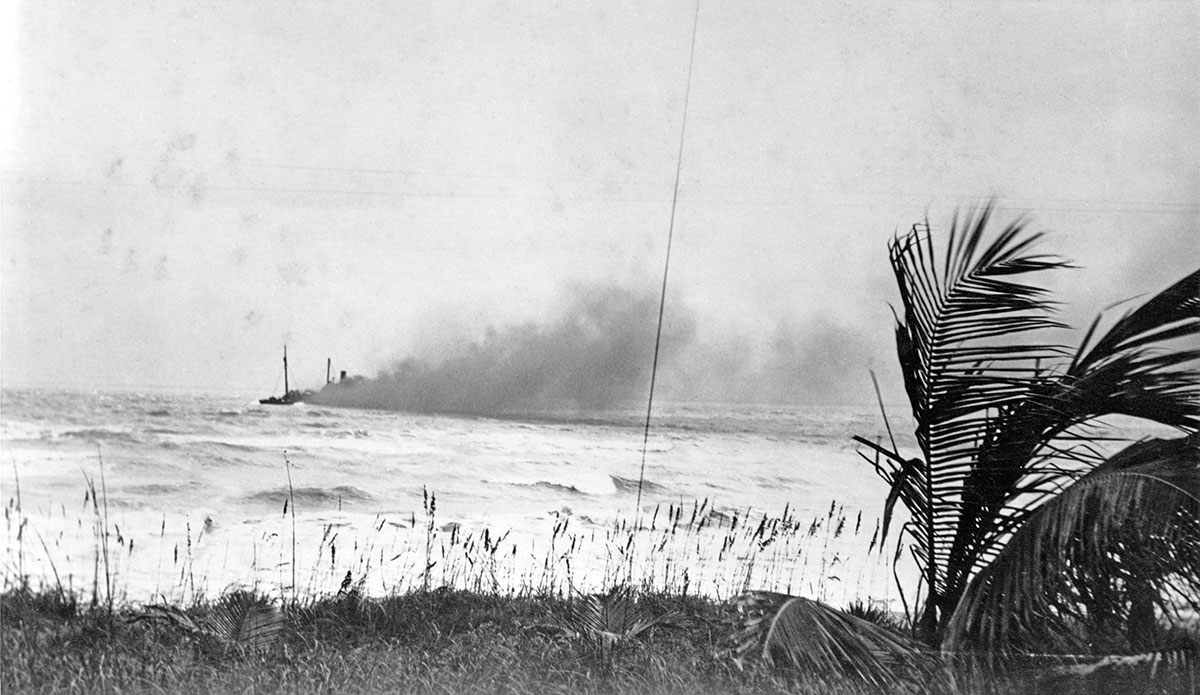Hunting grounds

When World War II brought German U-boats to the East Coast, ships were suddenly imperiled and often ablaze just offshore from both accidents and attacks. This photo taken from Hobe Sound in 1942 shows a ship that had been damaged in an accident at Jupiter Inlet. State Archives and Library of Florida
German U-boats wreaked havoc in shipping lanes off the Treasure Coast during World War II
BY ALISON O’LEARY
“Came to attack course of 60 degrees … have the steamer now lying at 0 degrees against the bright horizon at dusk ... Steamer zigzags to course 310 degrees … range now about 3000 meters … steamer has now turned and lies again bow left, therefore switched to a stern shot.”
Then, at 7:32 p.m. on Feb. 22, 1942, “Shot from tubes 5 and 6,” and torpedoes were on their way to the helpless tanker W.D. Anderson at sea a few miles off Hobe Sound.
The horrid explosion shook the Treasure Coast and took the lives of 35 sailors. Another ship, the Walter Jennings, reported the explosion and fire offshore but said it couldn’t assist or it would risk being the next victim.
World War II was at the country’s doorsteps with the arrival of German U-boats, which in 1942 found easy prey in the ships that plied the coast. This was so early in the war that Florida wasn’t bustling yet with soldiers and sailors; it was before blackout restrictions were enforced and before rationing was enacted.
Despite the creation of nearby Murphy Field, where the Southern Signal Corps School would open in June 1942, and the Fort Pierce Naval Amphibious Training Base, the war had been easy to dismiss until then. Unless someone’s son enlisted, the news was from the Pacific or Europe, not these quiet coastal towns.
